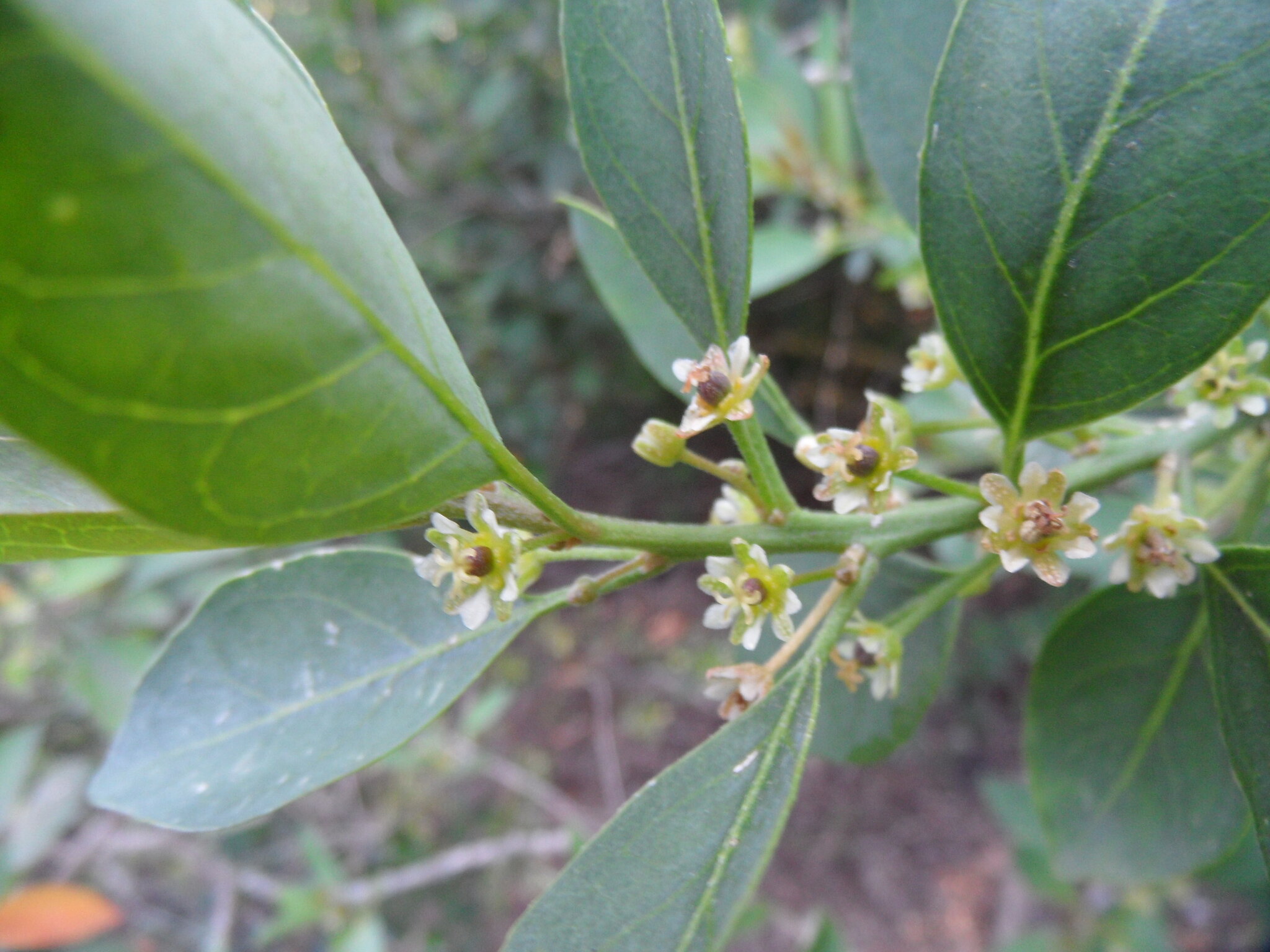
Named for Outger Cluyt, a 16th century Dutch botanist.
Herbs, shrubs or small trees,male and female flowers on the same plant or on separate plants, perennial; stems and foliage without latex. Indumentum of simple, multicellular hairs. Stipules entire, inconspicuous or absent, soon shed. Leaves alternate, stalked, unlobed, penninerved, without glands; margins entire. Inflorescences axillary; male inflorescences comprising many-flowered fascicles; female inflorescences comprising few-flowered fascicles or flowers solitary. Male flowers stalked; calyx lobes overlapping, 5, basally fused; petals overlapping, 5; disk of numerous glands; stamens 5, filaments fused into column. Female flowers stalked; calyx lobes 5, overlapping; petals 5, overlapping; disk of numerous glands; ovary 3-chambered, ovules 1 per chamber; styles free or basally fused, divided into 2. Fruits capsular, dehiscent, 3-lobed, surface smooth. Seeds ovoid; carunculate, non-arilloid.
About 70 species in Africa and Arabia. 1 species is occasionally cultivated.
Cuttings or seeds.
Male flowers with calyx lobes overlapping, 5, basally fused; petals overlapping, 5; disk of numerous glands; stamens 5, filaments fused into column. Female flowers with calyx lobes 5, overlapping; petals 5, overlapping; disk of numerous glands; styles free or basally fused, divided into 2.
Radcliffe-Smith (1987, 1996).
Source: (2002). Euphorbiaceae. In: . Horticultural Flora of South-eastern Australia. Volume 3. Flowering plants. Dicotyledons. Part 2. The identification of garden and cultivated plants. University of New South Wales Press.
